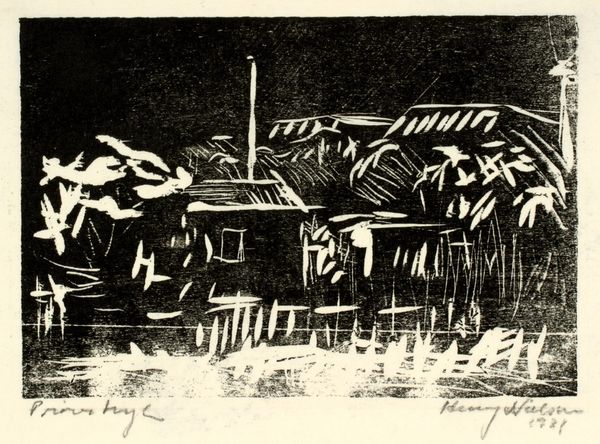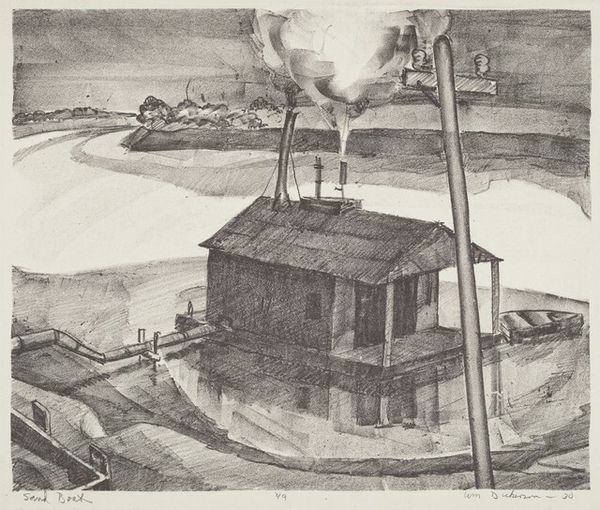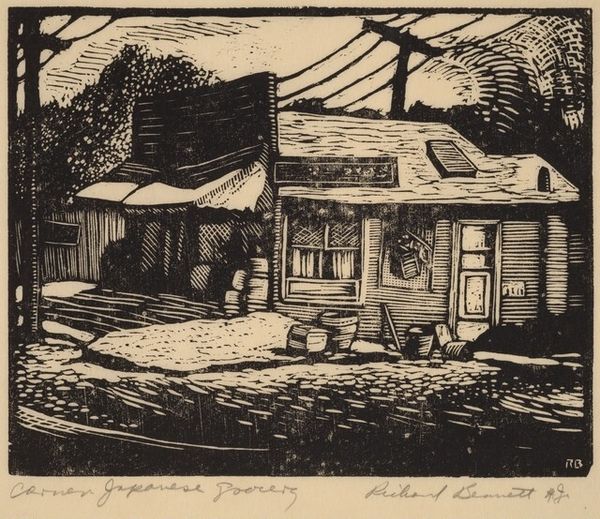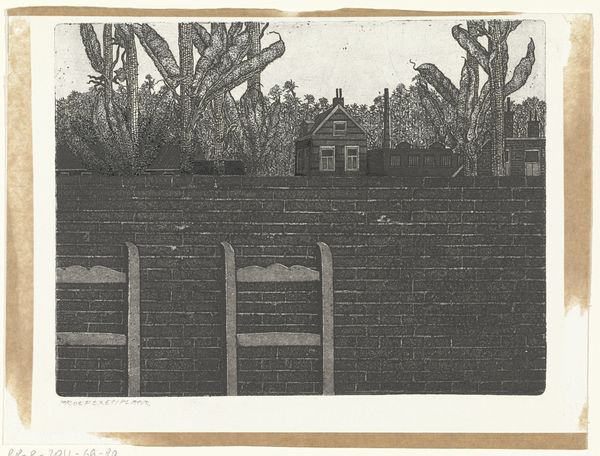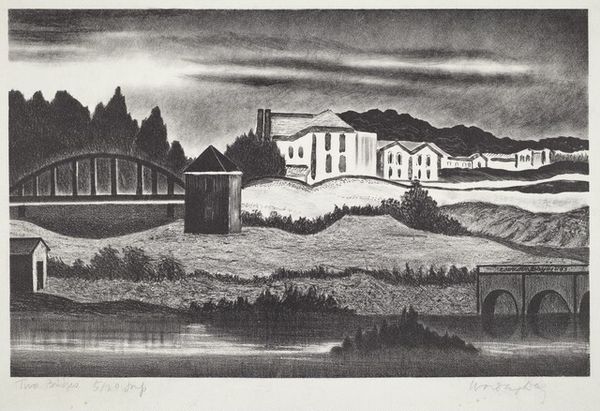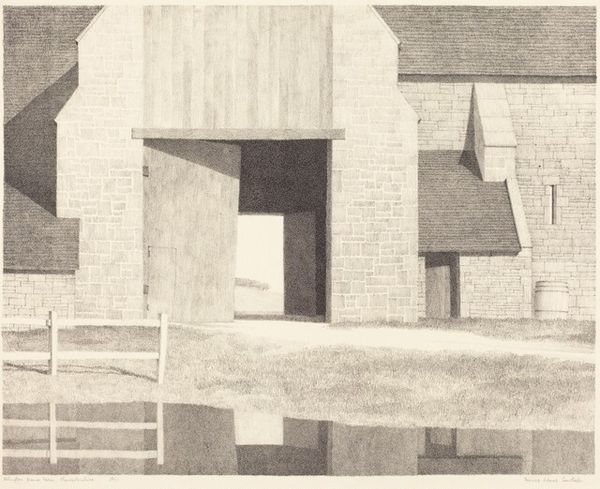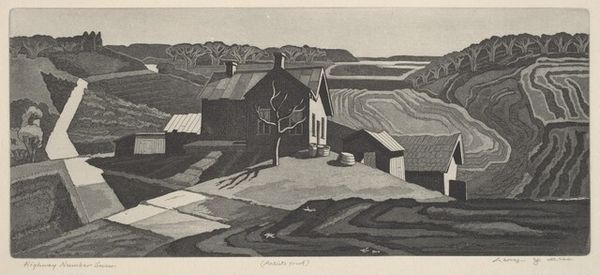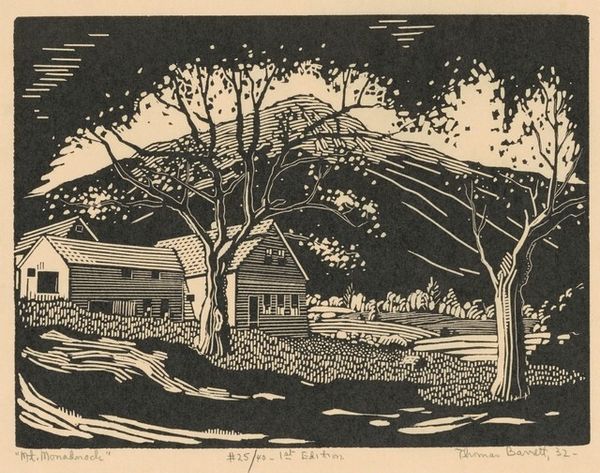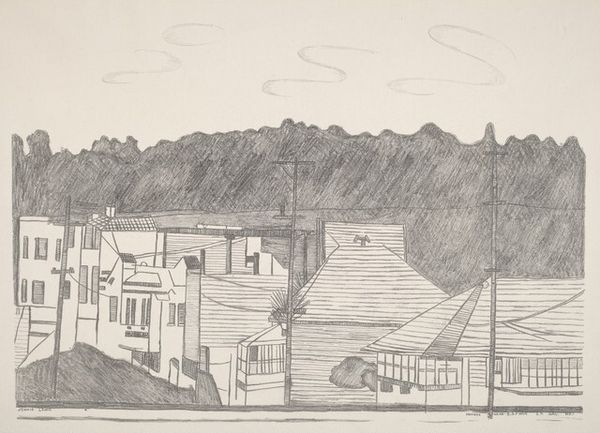
print, woodcut
# print
#
landscape
#
woodcut
#
realism
Dimensions: overall: 22.9 x 71.2 cm (9 x 28 1/16 in.)
Copyright: National Gallery of Art: CC0 1.0
Editor: Here we have Lynd Kendall Ward’s woodcut print, Buchanan’s Mill, created around 1970. It’s a striking landscape rendered entirely in black and white. I’m immediately struck by the scene’s desolation, yet there's a kind of stark beauty in the composition. What do you see in this piece? Curator: This print presents us with a scene ripe for socio-political interpretation. Think about the title: a mill, likely once a vital hub of industry and community. Ward created this work around 1970, amidst significant social and political upheaval in the United States. How might the crumbling infrastructure depicted reflect broader anxieties about industrial decline and its impact on working-class communities? Editor: I see what you mean. It’s not just a pretty picture, but maybe a commentary on the state of industry at the time. Curator: Precisely! Ward was deeply concerned with social justice issues and often used his art to address them. This mill, rendered in such stark terms, could symbolize the neglect and decay that some rural communities experienced. Notice the dominance of shadow and the fractured appearance of the building itself. Does this suggest anything about power dynamics or the exploitation of resources? Editor: I guess it emphasizes the negative consequences. I didn't consider that when I looked at it initially. It's really thought-provoking how art can carry so much meaning beneath the surface. Curator: Exactly. And by prompting us to question the structures around us, Ward hoped to inspire action and change. Considering Ward's style and the history he lived through definitely shapes how we understand his artwork. Editor: This conversation really shifted my understanding of the artwork's context! I see that thinking about history and society can add new meaning to even a landscape.
Comments
No comments
Be the first to comment and join the conversation on the ultimate creative platform.
